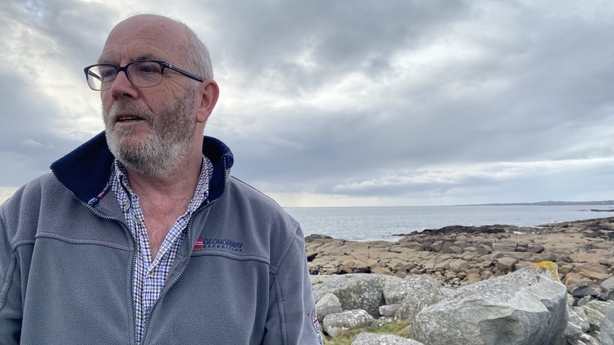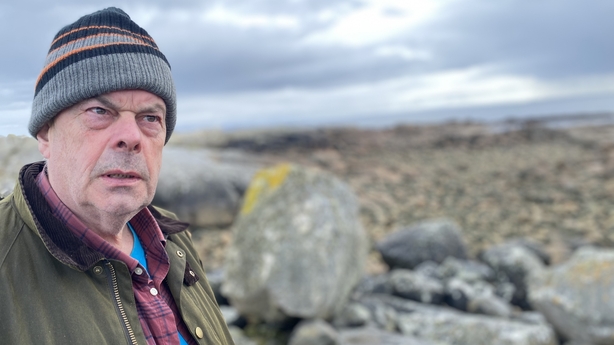Archaeologists in Galway have called for urgent action to conserve ancient heritage sites under threat from rising sea levels.
It comes as new research uncovered the oldest monumental site in Connacht, dating back almost 8,000 years.
The Cois Fharraige coastline in Conamara, between Cuan Chasla and An Spidéal, is the site of Connacht's oldest ancestors.
A grassy mound, which had been badly damaged in recent storm surges, uncovered fascinating information for archaeologists and historians like Michael Gibbons and Sean Ó Coistealbha.
It is one of a series of sites in the area that they have mapped and documented.
Samples of eroded seashells were taken away and tested in a laboratory to establish the date of the site.
The result that came back shows coastal settlers were in place almost 8,000 years ago.

"This shell-mound has been dated to circa 6,550 BC, making it the earliest known site to have been dated on the west coast of Ireland," said Mr Gibbons.
"The mound is known locally as An Toit Chonáin. Conán Maol was a member of the Fíanna and a famous comic figure in the early seanchas of Ireland, known for being vainglorious and boastful.
"Toit is a dialect word for a feed of shellfish and, according to local lore, the mound marked the spot where Conán paused to empty his pocket after a particularly large meal!"
He said: "These early settlers came from Iberia, crossed the Pyrenees up through France, got into boats either directly or indirectly via Britain or northern France, island hopping."
Mr Gibbons said they would have been disappointed to discover there were no animals on the land.
"There were no cattle, no sheep, no horses, no large mammals. So they were heavily dependent on shellfish. They were eating hazelnuts from the forest because there would have been a wooded landscape here.
"They were using pelts from seals and otters. They were living in a world where they were foraging and hunting and fishing. They lived that way for 4,000 years."

However it is a site along with hundreds of others in the area that is being eroded by ongoing rising sea levels.
Mr Gibbons said there is a "fantastic survey taking place on the east coast" and it is something he would like to see replicated in the west.
"A coastal archaeology unit for Connacht and Ulster would be an amazing asset to get off the ground here. There's far more damage here due to being on the Atlantic coast. There are bigger energies, bigger storm surges.
"We can see the damage in our lifetime. So the next big storms could see this whole mound vanish on us. This is the last fragment of this ancient Mesolithic landscape which has been destroyed by rising sea levels so it's crucial we preserve this hugely important part of our very early history."

As a local historian, Mr Ó Coistealbha believed Irish folklore and language came from these ancient ancestors.
"Language preserves history and the folklore associated with this archaeological site. But the danger here is erosion and destruction and the loss of the wonderful ancestral history behind this precious mound.
"These are our earliest ancestors, the people who gave us words, gave us language, gave us folklore to the people who spoke our Gaelic language initially. These are the people who colonised our shores and this is one of the most important mounds that I know of, indicating the presence of these people that dwelt here in the west of Ireland."

Mr Ó Coistealbha spoke of their 'teacht aniar' which means endurance and resilience, coming from the west.
The site remains extremely vulnerable to the long-term impact of climate change.
There are calls now for the conservation and excavation of the area as a matter of urgency to protect the rich cultural heritage on the western seaboard.






